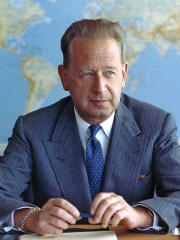
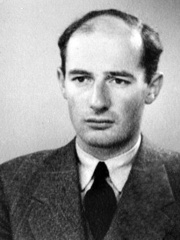
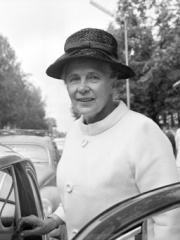
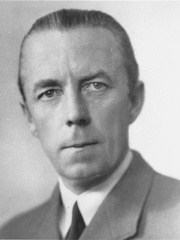
The Most Famous
DIPLOMATS from Sweden
This page contains a list of the greatest Swedish Diplomats. The pantheon dataset contains 90 Diplomats, 5 of which were born in Sweden. This makes Sweden the birth place of the 3rd most number of Diplomats behind United States, and United Kingdom.
Top 5
The following people are considered by Pantheon to be the most legendary Swedish Diplomats of all time. This list of famous Swedish Diplomats is sorted by HPI (Historical Popularity Index), a metric that aggregates information on a biography's online popularity.

1. Dag Hammarskjöld (1905 - 1961)
With an HPI of 79.85, Dag Hammarskjöld is the most famous Swedish Diplomat. His biography has been translated into 95 different languages on wikipedia.
Dag Hjalmar Agne Carl Hammarskjöld (English: HAM-ər-shuuld, Swedish: [ˈdɑːɡ ˈhâmːarˌɧœld] ; 29 July 1905 – 18 September 1961) was a Swedish economist and diplomat who served as the second secretary-general of the United Nations from April 1953 until his death in a plane crash in September 1961. As of 2025, he remains the youngest person to have held the post, having been only 47 years old when he was elected. He was a son of Hjalmar Hammarskjöld, who served as Prime Minister of Sweden from 1914 to 1917. Hammarskjöld's tenure was characterized by efforts to strengthen the newly-formed UN both internally and externally. He led initiatives to improve morale and organizational efficiency while seeking to make the UN more responsive to global issues. He presided over the creation of the first UN peacekeeping forces in Egypt (the UNEF) and the Congo (the ONUC) and personally intervened to defuse or resolve diplomatic crises. Hammarskjöld's second term was cut short when he died in a plane crash while en route to cease-fire negotiations during the Congo Crisis. Hammarskjöld was and remains well regarded internationally as a capable diplomat and administrator, and his efforts to resolve various global crises led to him being the only posthumous recipient of the Nobel Peace Prize. In the Western world, his appointment and tenure were hailed as one of the most notable and successful in UN leadership. U.S. president John F. Kennedy called Hammarskjöld "the greatest statesman of our century". In the third world, however, his legacy is extremely controversial, given his erratic performance in the Congo Crisis, with consequences to this day.

2. Raoul Wallenberg (1912 - 1947)
With an HPI of 75.53, Raoul Wallenberg is the 2nd most famous Swedish Diplomat. His biography has been translated into 55 different languages.
Raoul Gustaf Wallenberg (4 August 1912 – disappeared 17 January 1945) was a Swedish architect, businessman, diplomat, and humanitarian. He saved thousands of Jews in German-occupied Hungary during the Holocaust from German Nazis and Hungarian fascists during the later stages of World War II. While serving as Sweden's special envoy in Budapest between July and December 1944, Wallenberg issued protective passports and sheltered Jews in buildings which he declared as Swedish territory. On 17 January 1945, during the Siege of Budapest by the Red Army, agents of SMERSH detained Wallenberg on suspicion of espionage, and he subsequently disappeared. In 1957, 12 years after his disappearance, he was reported by Soviet authorities to have died of a suspected myocardial infarction on 17 July 1947 while imprisoned in the Lubyanka, the prison at the headquarters of the NKVD secret police in Moscow. A document released in 2023 as part of the President John F. Kennedy Assassination Records Collection indicates that Vyacheslav Nikonov, then an assistant to the head of the KGB, determined as part of a 1991 inquiry into the circumstances surrounding his disappearance that Wallenberg had likely been executed by Soviet authorities in late 1947 as a result of claims that he may have been associated with people helping not only Jews but also Nazi war criminals escape prosecution. However, there is no conclusive proof of this theory of Wallenberg's death, and his cause and date of death have been disputed ever since, with some people claiming to have encountered men matching Wallenberg's description until the 1980s in Soviet prisons and psychiatric hospitals. The motives behind Wallenberg's arrest and imprisonment by the Soviet government, along with questions surrounding the circumstances of his death and his ties to US intelligence, remain shrouded in mystery and are the subject of continued speculation. In 2016, the Swedish Tax Agency declared him dead in absentia, with the pro forma date of death noted as 31 July 1952. As a result of his successful efforts to rescue Hungarian Jews, Wallenberg has been the subject of numerous humanitarian honours in the decades following his presumed death. In 1981, US Congressman Tom Lantos, one of those saved by Wallenberg, sponsored a bill making Wallenberg an honorary citizen of the United States, the second person ever to receive this honour, after Sir Winston Churchill. Wallenberg also became an honorary citizen of Canada, Hungary, Australia, the United Kingdom and Israel. In 1963, Yad Vashem designated Raoul Wallenberg as one of the Righteous Among the Nations. Numerous monuments have been dedicated to him, and streets have been named after him throughout the world. The Raoul Wallenberg Committee of the United States was founded in 1981 to "perpetuate the humanitarian ideals and the nonviolent courage of Raoul Wallenberg." It gives the Raoul Wallenberg Award annually to recognize persons who take action to further these ideals. In 2012, Wallenberg was awarded a Congressional Gold Medal by the United States Congress "in recognition of his achievements and heroic actions during the Holocaust." Declassified documents have confirmed that Raoul Wallenberg worked with the Office of Strategic Services (OSS), the predecessor of the CIA. Although some have claimed that Wallenberg was responsible for rescuing 100,000 Jews who survived the Holocaust in Hungary, historians regard that figure as an exaggeration; Yad Vashem estimates the number of people granted protective paperwork as about 4,500 individuals.

3. Alva Myrdal (1902 - 1986)
With an HPI of 72.64, Alva Myrdal is the 3rd most famous Swedish Diplomat. Her biography has been translated into 69 different languages.
Alva Myrdal ( MUR-dahl, MEER-, Swedish: [ˈǎlːva ˈmy̌ːɖɑːl]; née Reimer; 31 January 1902 – 1 February 1986) was a Swedish sociologist, diplomat and politician. She was a prominent leader of the disarmament movement. She, along with Alfonso García Robles, received the Nobel Peace Prize in 1982. She married Gunnar Myrdal in 1924; he received the Nobel Memorial Prize in Economic Sciences in 1974, making them the fourth ever married couple to have won Nobel Prizes, and the first to win independent of each other (versus a shared Nobel Prize by scientist spouses).

4. Folke Bernadotte (1895 - 1948)
With an HPI of 71.72, Folke Bernadotte is the 4th most famous Swedish Diplomat. His biography has been translated into 37 different languages.
Folke Bernadotte, Count of Wisborg (Swedish: [fɔ̂l.kɛ̂ bæɳaˈdɔtː]; 2 January 1895 – 17 September 1948) was a Swedish nobleman and diplomat. In World War II, he negotiated the release of about 450 Danish Jews and 30,550 non-Jewish prisoners of many nations from the Nazi German Theresienstadt concentration camp. They were released on 14 April 1945. In 1945 he received a German surrender offer from Heinrich Himmler, though the offer was ultimately rejected by the allies. After the war, Bernadotte was unanimously chosen to be the United Nations Security Council mediator in the Arab–Israeli conflict of 1947–1948. He was assassinated in Jerusalem in 1948 by the paramilitary Zionist group Lehi while pursuing his official duties. Upon his death, Ralph Bunche took up his work at the UN, successfully mediating the 1949 Armistice Agreements between Israel and Egypt.
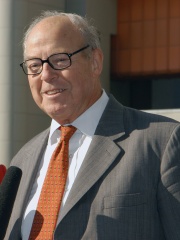
5. Hans Blix (b. 1928)
With an HPI of 66.35, Hans Blix is the 5th most famous Swedish Diplomat. His biography has been translated into 39 different languages.
Hans Martin Blix (Swedish: [hɑːns ˈblɪks] ; born 28 June 1928) is a Swedish diplomat and politician for the Liberal People's Party. He was Swedish Minister for Foreign Affairs (1978–1979) and later became the head of the International Atomic Energy Agency. Blix was the first Western representative to inspect the consequences of the Chernobyl disaster in the Soviet Union on-site and led the agency's response to them. Blix was also the head of the United Nations Monitoring, Verification and Inspection Commission from March 2000 to June 2003, when he was succeeded by Dimitris Perrikos. In 2002, the commission began searching Iraq for weapons of mass destruction, ultimately finding none. On 17 March 2003, U.S. President George W. Bush delivered an address from the White House announcing that within 48 hours, the United States would invade Iraq unless Saddam Hussein would leave. Bush then ordered all of the weapons inspectors, including Blix's team, to leave Iraq so that America and its allies could invade Iraq on 20 March. In February 2010, Blix became head of the United Arab Emirates' advisory board for its nuclear power program. He is the former president of the World Federation of United Nations Associations.
People
Pantheon has 5 people classified as Swedish diplomats born between 1895 and 1928. Of these 5, 1 (20.00%) of them are still alive today. The most famous living Swedish diplomats include Hans Blix. The most famous deceased Swedish diplomats include Dag Hammarskjöld, Raoul Wallenberg, and Alva Myrdal.
Living Swedish Diplomats
Go to all RankingsDeceased Swedish Diplomats
Go to all RankingsDag Hammarskjöld
1905 - 1961
HPI: 79.85
Raoul Wallenberg
1912 - 1947
HPI: 75.53
Alva Myrdal
1902 - 1986
HPI: 72.64
Folke Bernadotte
1895 - 1948
HPI: 71.72
Overlapping Lives
Which Diplomats were alive at the same time? This visualization shows the lifespans of the 4 most globally memorable Diplomats since 1700.

